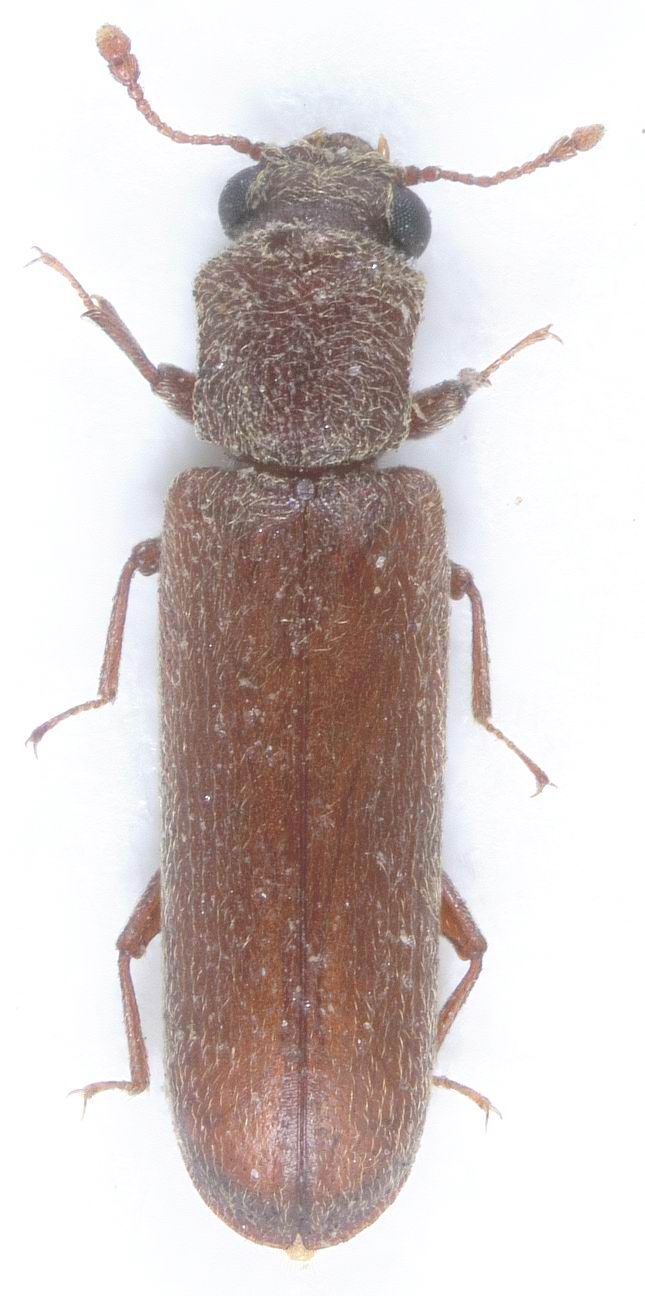Adult
Size
4 to 6.5 mm long.
Aspect
Elongate insects, with parallel sides, slightly flat, quite visible wide head with powerful mandibles.
Eleven-articled antennae, antennal clubs formed of 2 articles; antennae about the same length as the pronotum. Thorax slightly wider at the front than at the rear part, with a longitudinal concave hollow in its middle. Elytra about 2.5-fold more in length than in width, with a short, scarce pubescence of flat golden bristles pointing to the rear end on their upper part
Colour
Uniformly dark brown to reddish brown.


 Lyctus brun
Lyctus brun  Powder post beetle
Powder post beetle  Carcoma del parquet Escarabajo del polvo de los postes
Carcoma del parquet Escarabajo del polvo de los postes  Splinthholzkäfer Holzwurm
Splinthholzkäfer Holzwurm 

